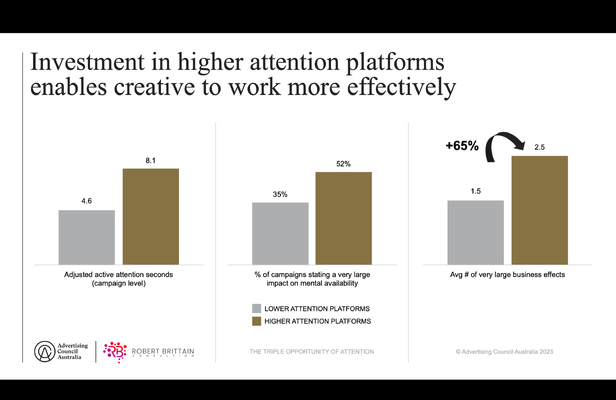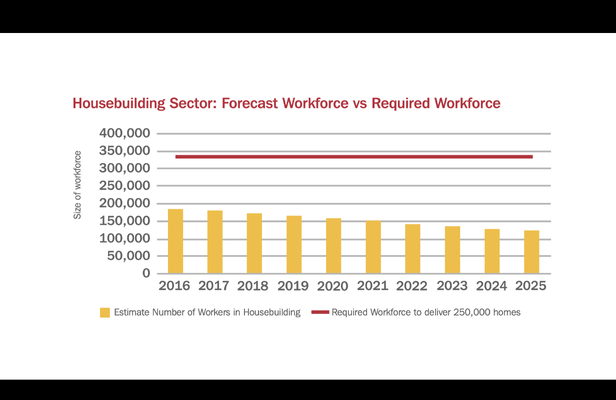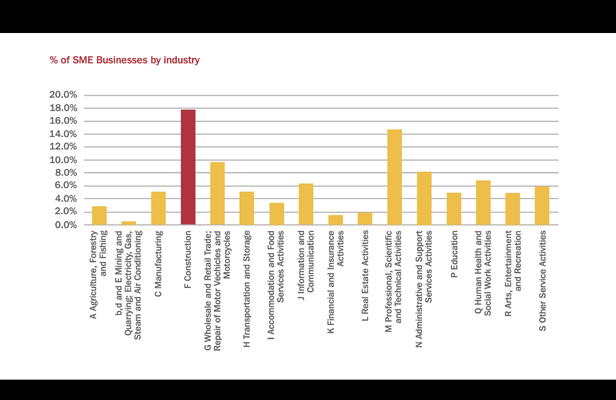Ever get asked a question, or a set of questions, and it sets the mental hares off racing?
That happened to me recently when I was asked the below by Lisa Artemis MCIM of Conquip Engineering Group :
“[What] do you think the most important ways of talking to the public about the benefits of the built environment and construction industry are? Through education institutions for grads and non-grads? Through the communicating the role in responsible built environment via local advocates? Through evidencing employment stability and therefore contribution to the Treasury? Through policy houses showing the high potential of carbon neutrality in the supply chain? Through project owners showing the ability to better connect people physically? Most of the methods seem too indirect not direct which don’t give the potential for big impact.”
It’s something that I’ve thought about for a while, particularly when starting to think about the broader image of the sector, how it’s received, and what could be done about it.
The short answer is ‘all of the above’, the long answer is much, much longer (sorry), hence the need to write this piece.
I’ve been asked these questions in several forms before, so it’s probably a useful exercise to lay out our thinking on Deconstruction , what we’re aiming to achieve, and why.
So, here goes…
The Fight for Attention
My honest belief is that the answer to fixing the sector’s issue is in brand, and in communicating the sector’s brand to the right people in a meaningful way.
For those that haven’t seen it, the work that Orlando Wood (System 1), Dr Karen Nelson-Field (Amplified Intelligence) and Rob Brittain (the Advertising Council of Australia) on the ‘Triple Opportunity of Effectiveness’ holds a lot of the answers and is definitely worth exploring.
In essence, the research from the trio identifies three core things needed for campaigns to achieve heightened effectiveness in marketing communications, which is exactly what construction needs:
· High-attention media
· Emotive advertising
· High investment (to create excess share of voice)
The work is definitely worth checking out and explains why we are where we are – I’ll link to it below.

The ‘Triple Opportunity’ work offers great insight into media selection and emotive creativity
As a sector, we’re very good at identifying issues and talking amongst ourselves, so much so that we sometimes forget about the bigger audience out there (I appreciate the irony of writing about this in a LinkedIn article for a construction marketing audience…).
It’s entirely understandable. The last few years haven’t been the easiest, and there are few sectors that have had it as bad as construction, but enough is enough. The skills gap has been around for a long time and is only getting worse. The Farmer Report told us in 2016 that a 20% contraction of the available workforce was likely over the decade – sadly, the report looks like it was right.

The Farmer Report (2016) – predicted levels of workforce decline are, sadly, pretty accurate
‘Modernise or Die’
If the report was right on that, perhaps it’s also right about other elements, too? Check out the sixth recommendation from the report:
“A reformed CITB or stand-alone body should be challenged and empowered to deliver a more powerful public facing story and image for the holistic ‘built environment’ process, of which construction forms part. This responsibility should include an outreach programme to schools and should draw on existing industry exemplars and the vision for the industry’s future state rather than just ‘business as usual’.”
Part of the reason that the ‘public facing story’ is so important is because the narrative isn’t being controlled at the minute. All of us can create powerful stories, but we train them on the supply chain to sell more services and systems without dealing with the outside world. This creates a vacuum where inaccuracy and misinformation live.
Stewart Rowles MIoR told a story on our recent RCI Show panel of being threatened by a teacher that if they didn’t study hard, they’d end up working in construction. I’ve had a client tell me that their factories, some of the most modern in Europe, are used as threats to local school children that don’t study. I’ve also just read a post a heart-breaking post from someone whose ADHD-diagnosed son was told he’ll end up in a ‘menial’ job.
Our research tells us that this is the prevailing view of the sector, and it’s completely wrong, so we need to undo that brainwashing.
There’s a lot of great grassroots stuff happening, but it’s too fragmented to add up to much. Terry Watts raised a brilliant point about how fragmented the sector is during our recent panel discussion at UK Construction Week . The sector is full of SMEs, and while there are lots of large contractors, housebuilders, and manufacturers, we don’t have any business with a double-digit percentage of the sector’s value (he used Tesco as the example in retail).

Graph from the Farmer Report showing construction’s sizeable SME make up
All of which means, as it stands, there’s no brand can realistically hope to generate recall with the public.
Put simply, there isn’t a brand that transcends the sector, so the sector must become the brand, to some extent.
Lessons Learned
It’s the same in other sectors, and they’ve handled it well. Take teaching and the armed forces, both have had their issues with recruitment (and continue to do so), but they’ve used at least two of the three steps above – emotive advertising and high attention media – to reclaim the narrative about their sector and attempt to drive recruits.
Ruth Scarrott and I recently discussed this. Both sectors haven’t solved their own recruitment issues, so this isn’t a ‘silver bullet’ but they’re at least presenting their sectors in a desirable way, building long-term mental structure that they’re in charge of.
They’ve tried to build some emotional resonance, beyond salaries and daily tasks, to focus on the impact that the sector, and those within it, make. Interestingly, the latest ‘Every Lesson Shapes a Life’ TV advert nailed the emotive point, picking up a ThinkBox award as the best TV ad that ran in Q1 this year, delivering that emotive message via high attention media, in line with the System 1 research.
"(TV) delivers credibility and mass reach," said DfE head of marketing Nicole Keane. "It’s also how we state our case: everything else works with it."
This mix of emotive messaging, to a mass market is exactly what best practice looks like, and what we’re aiming to do with Deconstruction.
We recognise that the construction sector is many sub-sectors and supply chains that occasionally overlap, and that we’ll never be able to manage the entire process of raising interest through to the ultimate conversion of someone picking a career in the sector.
We’re trying to do the top of funnel stuff; raising awareness of what the sector really does and allowing interested parties to start to consider the sector, it’s then over to our partners in the industry to convert them when appropriate.
Managing the Message
Regarding image, the Farmer Report noted;
“There also seems to sometimes be a lack of conviction, belief and promotion by many participants in the industry, from unskilled and skilled tradesmen to professionals who should all be front line ambassadors to their friends, family and the public at large.”
In recent months the public has heard about HS2’s Northern-leg cancellation, the RAAC schools’ crisis, the sector’s environmental impact and company liquidations, with few positive stories to provide balance – which means it’s on all of us to provide that balance to those that we can influence.
So, away from big campaigns, what can we all do? Thankfully, there’s plenty:
• We can manage our own networks, making sure that every one of our roles are visible, dispelling the myths about the sector being only hi-vis and hard hats.
• We can make sure that our campaigns for our own brands and businesses, even if they’re not aimed at the public, embrace storytelling, and show us (and the sector) in the correct light.
• When we recruit, we can make sure that we’re conscious about our workforce being truly representative of the UK – making sure there’s a space for everyone.
• We can celebrate our good news, making sure that our PR activity is visible in our local communities (and national media, where appropriate) to dilute some of the negativity about the sector in mainstream media.
• We can get into our local schools and give them our first-person accounts of our roles.
• We can work with colleges and training providers to ensure that they have an industry end-point for any talented young people to be guided towards.
• We can work with our industry bodies to ensure that our parts of the sector are represented properly, and to keep pressure on Government to do its bit to ensure the sector is (at the very least) not reported on negatively.
• Finally, we can engage with the young (and not so young) people in our own lives and make sure that they feel like construction is at least a viable option for them in the future.
That last one feels huge, to me. We shouldn’t expect that, whatever we do, the sector becomes so popular that it’s oversubscribed – but we should at least be a realistic consideration for people with all kinds of skill sets and qualifications.
We shouldn’t create role models needlessly, but we need to make sure that people can see a potential pathway for people ‘like them’, with their skillset, experiences, values, and background.
The stakes are high, the sector must provide enough homes and amenities for a growing, ageing population whilst ensuring that the country is set for Net Zero 2050 (whilst also limiting our own impact). We’re going to need a diverse set of skills, as well as the sheer volume of people needed.
The headline stat from our YouGov research was that 69% of respondents said they’d NEVER consider a career in the sector, a figure which rose to 75% when we cut the data for 18–24-year-olds in full-time education. It’s on all of us to make sure these numbers decrease.
If we achieve this and nothing else, I don’t think we’ll have done badly. We’d love it if you registered your interest in Deconstruction as we start on our first steps to correcting the public view of the sector.
Links:
Deconstruction – www.thisisdeconstruction.com
‘The Triple Opportunity of Attention’ – https://system1group.com/blog/the-triple-opportunity-of-attention
The Farmer Report – https://www.constructionleadershipcouncil.co.uk/wp-content/uploads/2016/10/Farmer-Review.pdf
DfE wins ThinkBox award for TV creativity (Campaign) – https://www.campaignlive.co.uk/article/department-education-scores-top-marks-tv-creativity/1677776






